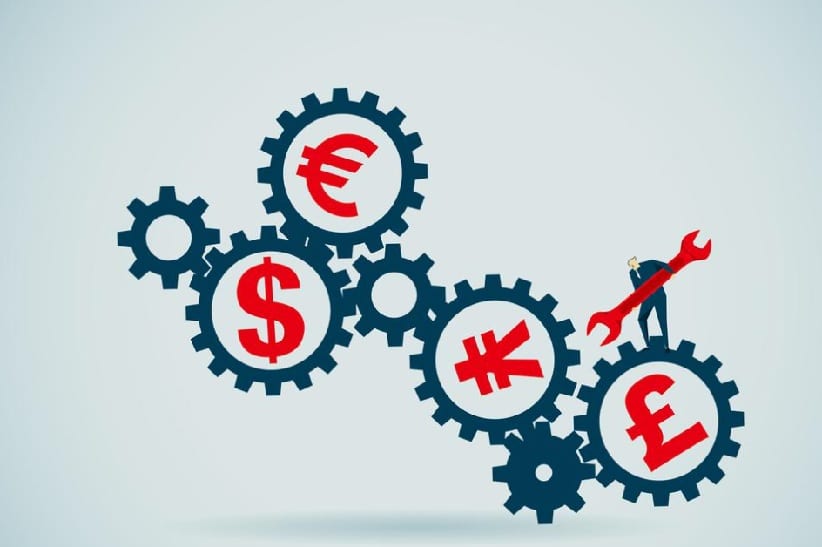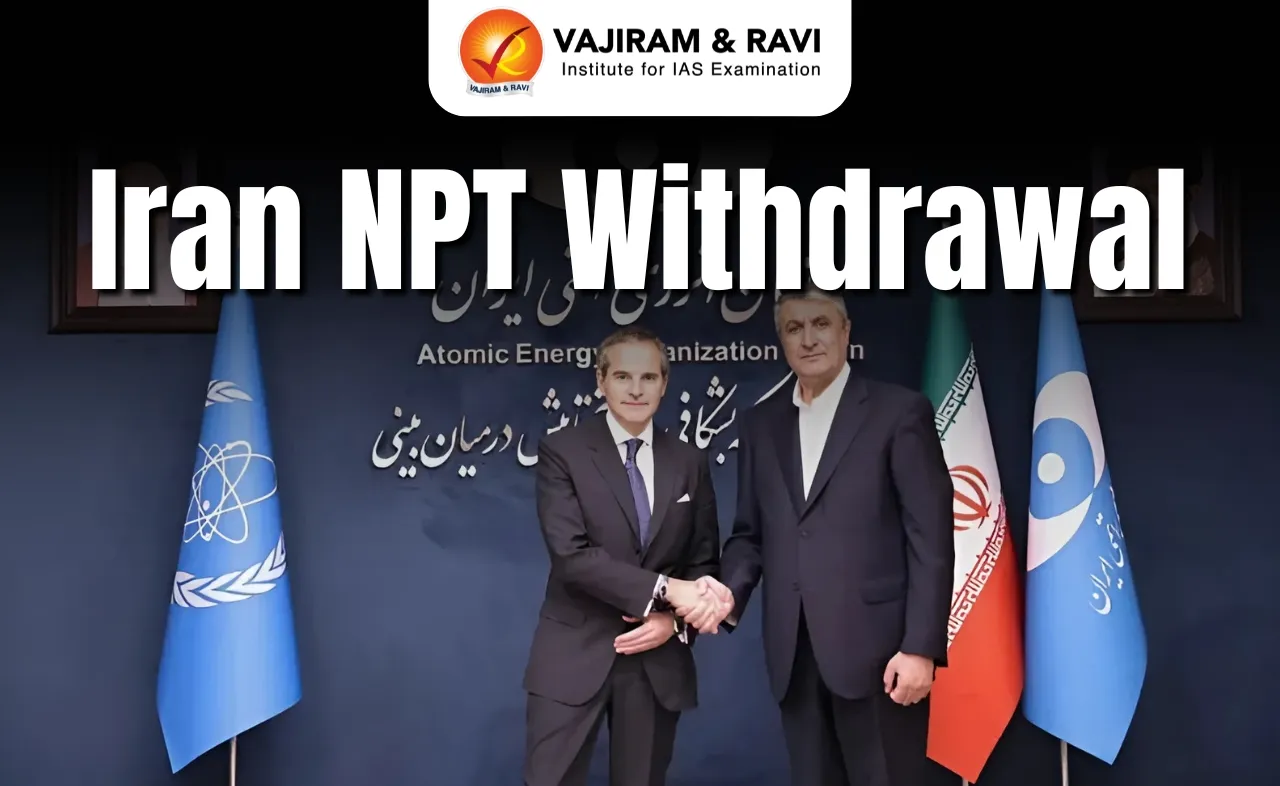What’s in today’s article?
- Why in news?
- What is De-dollarisation?
- What gives the US dollar the power in international trade?
- Why was the call for de-dollarisation renewed?
- Global Efforts Towards De-dollarisation
- Challenges Towards De-dollarisation
- Conclusion
Why in news?
- In April 2023, while facing criminal charges, former US President Donald Trump had warned that US Dollar is crashing and will soon no longer be the world standard.
- His warning came amid rising interest in countries to go towards de-dollarisation.
What is De-dollarisation?
- De-dollarisation refers to the process wherein countries tend to reduce their reliance on the US dollar as a reserve currency, medium of exchange, and also a unit of account.
- Reserve currency is the foreign currency held by central banks to facilitate international transactions, stabilise exchange rates and bolster financial confidence.
- The attempts to dethrone the dollar as the global reserve currency have picked up pace in the aftermath of Russia’s invasion of Ukraine last year.
What gives the US dollar the power in international trade?
- Historical factors
- The US dollar began replacing pound sterling as international reserve currency in the 1920s since the country emerged from the First World War unscathed.
- The Bretton Woods system cemented the dollar’s position further after World War II.
- Since the US emerged stronger after the Second World War, the 1944 agreement established a post-war international monetary system that allowed the US dollar to become the world’s primary reserve currency globally.
- Reserve Currency Status
- The central banks around the world hold US dollars as a reserve to support their own currencies and to conduct international transactions.
- This gives the US dollar a strong global demand, making it a widely accepted currency in international trade.
- Stability and Liquidity:
- The US dollar is considered a stable and liquid currency.
- Size of the US economy:
- The US economy is the largest in the world, with a GDP of over $22 trillion.
- This means that the US dollar is widely used in international transactions and trade due to the large volume of US goods and services that are traded.
- Network Effects:
- The US dollar has a strong network effect, as it is widely used in global financial markets, and is the default currency for many commodity prices, such as oil.
- This makes it convenient for businesses and individuals to use the US dollar in international transactions, creating a self-reinforcing cycle.
Why was the call for de-dollarisation renewed?
- Geo-political events and search for alternatives
- Iran and Russia (for invading Ukraine) were disconnected from the international dollar-trading systems like SWIFT.
- The U.S. imposed several sanctions that restricted the use of the U.S. dollar to purchase oil and other goods from Russia.
- This has been seen by many countries as an attempt to weaponize the dollar.
- Overreliance on the US dollar
- As the world becomes more and more interconnected, the need for a stable and equitable financial system became paramount.
- Hence, the overreliance on the US dollar as a reserve currency has to some extent led to vulnerabilities and imbalances in the global economy.
- Growing economic power of emerging market
- The growing economic power of emerging markets and their desire for a more diversified and resilient financial architecture has renewed the call for de-dollarisation.
Global Efforts Towards De-dollarisation
- Countries all over the world
- China, Russia and Brazil have been among the expanding list of nations that have embarked upon the path of de-dollarisation.
- In January 2023, Iran and Russia announced that they will jointly issue a new cryptocurrency backed by gold, to serve as a payment method in foreign trade.
- In March 2023, China and Brazil reached an agreement to settle trades in each other’s currencies.
- Similarly, Argentina said it will pay for Chinese imports in yuan instead of US dollars in order to preserve its dwindling foreign reserves.
- India moves away from the dollar
- India has also started making efforts to reduce its dependence on the dollar.
- It started moving towards paying in rupees for oil imports from Russia.
- In July 2022, the RBI through a circular allowed international payment settlements for imports and exports to be made in rupees.
- Due to the efforts of the Government of India, so far banks of 19 countries including the UK, New Zealand, Germany, Malaysia, Israel, Russia and the United Arab Emirates have been permitted to make settlements in rupees.
Challenges Towards De-dollarisation
- Potential impact on global financial stability
- As countries reduce their reliance on the US dollar, adjustments in the composition of global reserve assets may lead to shifts in capital flows and changes in asset prices.
- These fluctuations could create financial instability, particularly in emerging markets and countries with substantial dollar-denominated debt.
- Creating a viable alternative to the US dollar
- Creating a viable alternative to the US dollar presents a formidable challenge to achieve the requisite degree of stability, liquidity, and acceptability.
- Currently, no single currency fully meets these criteria, although the euro and the Chinese yuan have made strides in this regard.
- Increased volatility in currency exchange rates
- It could result in increased volatility in currency exchange rates, particularly during the initial phases of transition.
- Hence, de-dollarisation will have potential costs for developing countries.
Conclusion
- De-dollarisation presents opportunities for a more diversified and resilient global financial system.
- However, it also poses significant challenges that must be carefully managed to ensure the preservation of global financial stability and sustained economic growth.
- Hence, developing countries like India should adopt a prudent and measured approach towards de-dollarisation.
Q1) What is Reserve Currency?
A reserve currency is a currency that is held in significant quantities by governments, central banks, and other financial institutions around the world as a means of storing value and conducting international transactions. Typically, reserve currencies are currencies issued by large and stable economies, such as the US dollar, the Euro, the British pound sterling, the Japanese yen, and the Swiss franc.
Q2) What is Society for Worldwide Interbank Financial Telecommunication (SWIFT)?
The Society for Worldwide Interbank Financial Telecommunication (SWIFT) is an international messaging network used by banks and other financial institutions to securely transmit information and instructions related to financial transactions, including cross-border payments.SWIFT is a cooperative society owned by its member financial institutions, which are primarily banks.
Source: De-dollarisation: the race to attain the status of global reserve currency | NDTV | Indiatimes
Last updated on June, 2025
→ UPSC Notification 2025 was released on 22nd January 2025.
→ UPSC Prelims Result 2025 is out now for the CSE held on 25 May 2025.
→ UPSC Prelims Question Paper 2025 and Unofficial Prelims Answer Key 2025 are available now.
→ UPSC Calendar 2026 is released on 15th May, 2025.
→ The UPSC Vacancy 2025 were released 1129, out of which 979 were for UPSC CSE and remaining 150 are for UPSC IFoS.
→ UPSC Mains 2025 will be conducted on 22nd August 2025.
→ UPSC Prelims 2026 will be conducted on 24th May, 2026 & UPSC Mains 2026 will be conducted on 21st August 2026.
→ The UPSC Selection Process is of 3 stages-Prelims, Mains and Interview.
→ UPSC Result 2024 is released with latest UPSC Marksheet 2024. Check Now!
→ UPSC Toppers List 2024 is released now. Shakti Dubey is UPSC AIR 1 2024 Topper.
→ Also check Best IAS Coaching in Delhi























